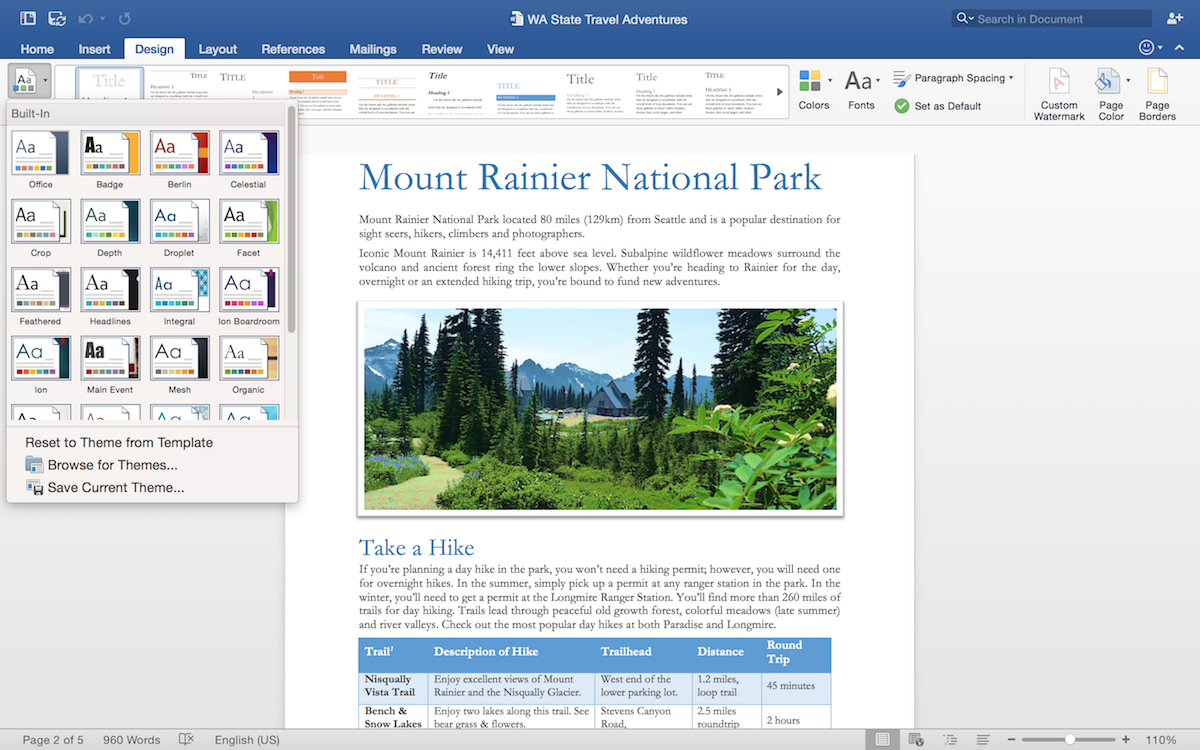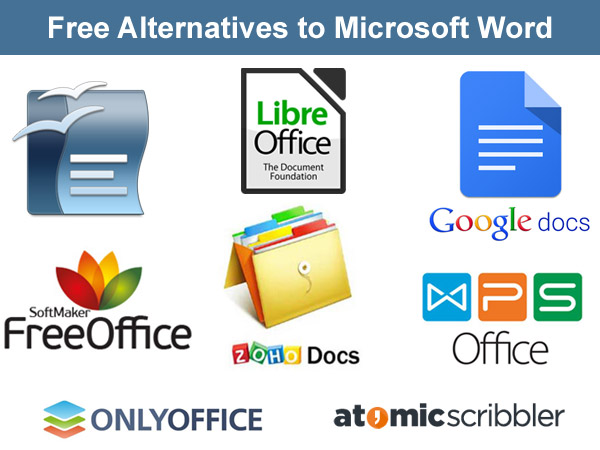I’m sure we are all used Microsoft Word, the most popular Word Processor on the market. Microsoft Word is almost a complete Word Processor there you can add Images, tables, charts, SmartArt, footnotes, equations are all there, nicely formatted.
- Microsoft Word Processor 2016
- Microsoft Word Processor For Free
- Microsoft Word Processor For Windows 10
Create documents, reports, write novels, articles, letters in fast-loading, powerful word processor. Go Word - for Microsoft Office Word Processor $6.99 Go Word is a fully featured word processor app, which lets you create and edit Word 97-2010 (.doc &.docx) format files on your iPhone/iPad. But its heart is the powerful and unique WordPerfect word processor, the only current word-processing app that doesn't try to look and feel like Microsoft Word.
You need to purchase a full office suite to get maximum from Microsoft Word. If you aren’t a fan of Microsoft Word and not interested in purchasing a full office suite, need just a Word Processor this article is just for you.
Here we go with the best free word processors to try in 2016.
1. Google Docs
Google Docs comes first into our list as one of the best free word processors. You can easily Create, edit, and collaborate with others on Google Docs documents easily.

Google Docs comes with a clean layout, it makes distraction free and easy to use. You can type up to 1.02 million characters on a single Google Docs file and you can convert a text document to Google Docs format with the maximum file size of 50 MB.
2. Quip
Quip is the productivity suite currently I’m using to get my work done. If you never heard about Quip, I highly recommending you to try and I’m sure you love it.
You can create documents and spreadsheets with Quip. One of the major highlights I love on Quip is we can easily import our existing documents from Evernote, Google Drive, Dropbox, Box, Hackpad, and Basecamp.
Quip is free for unlimited personal documents and folders, and a 1,000 message archive. Quip already released native apps for Desktop that runs on both Mac (version 10.8+) and Windows (version 7+).
3. Jarte
Jarte comes next into our list. Jarte is a lightweight and fast word processor that is fully compatible with Windows XP, Vista, 7, 8, 8.1, and 10.
Jarte boots really quickly can be run as a portable word processor directly from a USB flash drive, CD, or DropBox folder. Jarte comes with a quality spell checker with custom user dictionary included spelling dictionaries for languages like English, Spanish, French, German, Italian, and Dutch.
4. OpenOffice
Apache OpenOffice included 6 suites like Word Processor, Spreadsheets, Presentations, Graphics, Database Manipulation, and Mathematical Equations. Apache OpenOffice is easy to learn and entirely free to use of any license.
5. AbiWord
AbiWord is another word processing program similar to Word. AbiWord is a cross-platform program that you can run on Windows, Mac OSX, and Linux.
6. WPS Office
WPS Office comes next into our list. WPS is a free office suite comes with a word processor, a spreadsheet program and a presentation maker.
WPS Office supports English, French, German, Spanish, Portuguese, Russian and Polish languages. WPS Office has a PDF converter, spell check, and a word count feature makes WPS Office great for writers.
7. Etherpad
Etherpad comes next into the list. Etherpad allows you to write articles, press releases, to-do lists, etc. Etherpad is an open source project main development happens on Github.
Through Etherpad, you can edit documents collaboratively in real-time together with your friends, fellow students or colleagues, etc.
8. LibreOffice
LibreOffice is a powerful, user-friendly office suite that available for free to use even for commercial purposes. LibreOffice recently released their latest version 5.1 that feels better and works better with other Office Apps.
You can create text documents, spreadsheets, presentations with LibreOffice and can save in Microsoft formats.
Sometimes called Winword, MS Word, or Word, Microsoft Word is a word processor published by Microsoft. It is one of the office productivity applications included in the Microsoft Office suite. Originally developed by Charles Simonyi and Richard Brodie, it was first released in 1983.
Microsoft Word is available for Microsoft Windows, Apple macOS, Android, and Apple iOS. It can also run on the Linux operating system using WINE.
What is Microsoft Word used for?
Microsoft Word allows you to create professional-quality documents, reports, letters, and résumés. Unlike a plain text editor, Microsoft Word has features including spell check, grammar check, text and font formatting, HTML support, image support, advanced page layout, and more.
What does the Microsoft Word editor look like?
Below is an overview of a Microsoft Word 2010 document.
TipSee our Ribbon page for further information on the Ribbon. For an overview of the items contained on the Ribbon, see: Overview of the Microsoft Office Ribbon.

Where do you find or start Microsoft Word?
If you have Microsoft Word or the entire Microsoft Office package installed on Microsoft Windows, you can find Microsoft Word in your Start menu.

Keep in mind that new computers do not include Microsoft Word. It must be purchased and installed before running it on your computer. If you do not want (or cannot afford) to purchase Microsoft Word, you can use a limited version for free at the Microsoft Office website.
NoteThere are also free word processing programs you can try that are very similar to Microsoft Word. See: Where can I get a free word processor?
If Microsoft Word is installed on your computer, but you can't find it in your Start menu, use the following steps to launch Microsoft Word manually.
- Open My Computer.
- Click on or select the C: drive. If Microsoft Office is installed on a drive other than the C: drive, select that drive instead.
- Navigate to the Program Files (x86) folder, then the Microsoft Office folder.
- In the Microsoft Office folder, if there is a root folder, open that folder. Then open the OfficeXX folder, where XX is the version of Office (e.g., Office16 for Microsoft Office 2016). If there is no root folder, look for and open a folder having 'Office' in the name.
- Look for a file named WINWORD.EXE and click or double-click that file to start the Microsoft Word program.
What are the uses of Microsoft Word?

Microsoft Word is a word processor, and, like other word processors, it's capable of helping users create a variety of different types of documents. For example, users can create a résumé, business contract, instruction document, or a letter to another person. We've included a list of the top uses of a word processor on our word processor page.
How many lines are there on a page in Microsoft Word?
By default, there are 29 lines on one page in Microsoft Word.
What type of files can Microsoft Word create and use?
Early versions of Microsoft Word primarily created and used the .docfile extension, while newer versions of Word create and use the .docx file extension.
More recent versions of Microsoft Word can create and open the following types of files:
- .doc, .docm, .docx
- .dot, .dotm, .dotx
- .htm, .html
- .mht, .mhtml
- .odt
- .rtf
- .txt
- .wps
- .xps
- .xml
Example of a Microsoft Word .doc file
You can download an example of a Microsoft Word .doc document by clicking the Microsoft Word .doc file link.

Why use Word instead of a plain-text editor?
Microsoft Word offers many features not found in a traditional text editor or a plain-text file. Reasons to use Microsoft Word instead of a plain-text editor include the ability to change the formatting (e.g., center), change the font type, size, and color, insert pictures, and much more.
TipThe features above are also available in a rich-text editor, such as WordPad, which is included with Microsoft Windows.
Why use Word instead of a WordPad?
A rich-text editor, like WordPad, offers many of the same basic features as Microsoft Word. Where Microsoft Word differs is the ability to do more advanced features. Some of the advanced features include mail merges, spellchecker, styles, tables, headers & footers, WordArt, columns, margins, and more.
Microsoft Word Processor 2016
What are the different versions of Microsoft Word?
Microsoft Word Processor For Free
Microsoft Word has had several versions throughout its history. The different releases, along with release dates are listed below.
Windows versions
- Word 2019, released in 2018
- Word 2016, released in 2016
- Word 2013, released in 2013
- Word 2010, released in 2010
- Word 2007, released in 2006
- Word 2003, released in 2003
- Word 2002, released in 2001
- Word 2000, released in 1999
- Word 98, released in 1998
- Word 97, released in 1997
- Word 95, released in 1995
- Word 6.0, released in 1993
- Word 2.0, released in 1991
- Word 1.1, released in 1990
- Word 1.0, released in 1989
Mac versions
- Word 2019, released in 2018
- Word 2016, released in 2015
- Word 2011, released in 2010
- Word 2008, released in 2008
- Word 2004, released in 2004
- Word v. X, released in 2001
- Word 2001, released in 2000
- Word 98, released in 1998
- Word 6, released in 1993
- Word 5.1, released in 1992
- Word 5, released in 1991
- Word 4, released in 1989
- Word 3, released in 1987
- Word 1, released in 1985
Related pages
Microsoft Word Processor For Windows 10
Desktop publishing, Editor, Google Docs, Office, Office 365, Office Online, Software terms, WordPad, Word processor, Word processor terms
